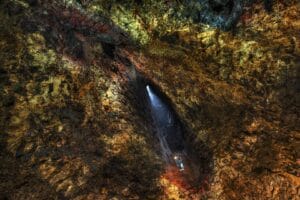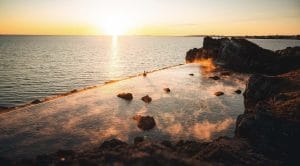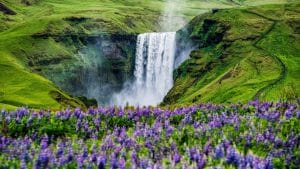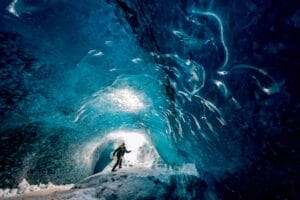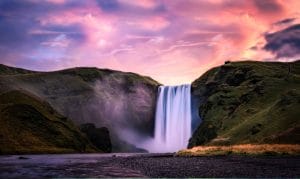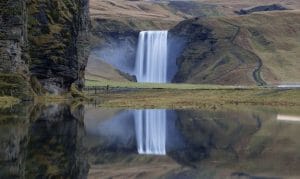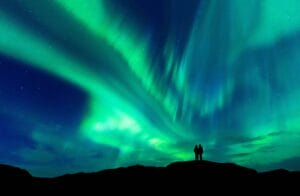Traveling to a new country doesn’t only mean to get one to one with its natural attractions, the monuments that the country takes pride in, the food that will leave you magically satisfied, the local people who are happy beyond comprehension to welcome you in their country or the fine nightlife that would render you dancing on the dance floor. Traveling in a new country also means to understand the rich culture and heritage that has been passed down from generations and has been maintained and welcomed with the same energy and spirit by the youngsters. Every country has a unique culture and traditions deep-rooted in the veins which are as interesting to explore as any other tourist spot in the country.
Traditions and culture of any country give rise to several legends that include gods, deities, mythical creatures, and many other interesting things that become a permanent part of the country, its people, and the lifestyle. So, to know a country completely and experience the true bliss that it holds, one needs to experience every single including the traditions, culture, and legends of the country in consideration. And when the culture and folklore of the country you are traveling to are as interesting as they have here in Iceland. From Norse gods like Thor and Loki to elves, giants, trolls, and many more interesting creatures, Icelandic folklore, and legends are filled with countless interesting things to explore and know about.
Folktales in Iceland
Folk tales in Iceland have several different versions since every area in Iceland comes up with their version with a few changes here and there. The long dark winter nights of the land of ice and fire were made entertaining with these small anecdotes and legends. These legends have been passed down from the beginning of time and have become an important part of the everyday life of Icelanders. These legends have not only been passed down verbally but also have been found as written records dating back to the 12th century. The tough weather and harsh living conditions of this new land were mellowed by these interesting stories which also kept the culture of Vikings alive for centuries. These stories were fun as well as educational teaching the youngsters to respect not only each other but also nature and the land they live on.
The Fabled – Mythical Creatures of Iceland
The deep-rooted and extensive cultures give birth to a lot of legends which in turn end up forming up many mythical figures. Iceland is no alien to this concept and has told strange tales that have had many peculiar mythical creatures in them from time on time. Some of these creatures include trolls, elves, giants, hidden people, serpents, wurms, monsters, chimeras, nuggles, and even witches. Iceland is the land of firm believers of the supernatural and the spiritual and even has several spots in its vicinity that are more popular for the spiritual energy that they house instead of their unmatched natural beauty, which can be a shocker for a country like Iceland.
The most popular mythical creatures in Iceland are giants, trolls, and elves. While the rest exist somewhere in the legends and the stories passed down through generations, they do not take the front spot in the show. Giants and trolls are the ones with more of a physical presence than elves. So, elves are generally known as spirits or hidden people since not a lot of humans have seen them while the trolls or giants (some people say that trolls and giants are the same while others claim them to be different) are the ones who shared several encounters with many Icelanders and has gained a permanent place in the stories.

Elves in Iceland
The first thing that comes to mind upon hearing the word ‘elves’ is a mystically beautiful being with pointy ears, soft flowing robes, beautiful white pale skin, and an aura that soothes the soul. Elves, in Iceland, are also known by the name hidden people since there is only a handful who can actually even claim to have seen them. Elves are more of spiritual beings or presence and hence invisible to the naked eyes. Elves are a frequent appearance in several mythologies including European and German which describes them as beautiful and mysterious beings with eternal youth and many superpowers.
Just like everything else has been molded as per the unique culture and traditions of Iceland, elves in Iceland also have a different vibe and characteristics to them. Huldufólk is the word that is used to commonly refer to elves in Iceland and it means hidden people. Icelanders believe that elves live in caves, canyons, or under and inside large rocks and lead a life similar to that of human beings. They pick their berries, cut their hay, raise livestock, fish, and even visit the church on Sundays. Elves in Iceland led a human life but since they are not easily seen by humans, they get to be known as hidden “people”. The invisibility of the hidden people of Iceland is justified as their desire to keep to themselves and not allowing anyone to see them, except for a few special occasions of course.
Almost all mythologies that mention elves also mention their temper and fierce nature. Albeit calm, elves can turn hostile when their home or fellow elves are endangered. While many aspects of elvish life in Iceland are different, this one particular thing remains the same. Extremely protective of their home, elves can cause great harm to people or things that pose a danger to them. This is why several construction projects are either scratched or replanned if the initial plan includes demolishing or even slightly breaking the house of an elf. These houses include enchanted rocks and caves which are scattered all over the country. One may see this as a superstition but Icelanders allegedly true accounts where heavy machinery faces constant failures or breakdown, a worker is hurt on the job and many other freakish coincidences that may suggest a spiritual presence in these places. The most recent one reported is on the construction site of a road which was being built in the Gálgahraun lava field. The construction company had to shut down the project after a number of machinery failures and on job employee failure reports.
If you want to visit a place that has been flooded with elf legends, energy and vibe then Asbyrgi canyon is the place to be. It is known as the capital city of elves and is said to have been created by the hoof of Odin’s horse, Sleipnir, when it stepped on Midgard from Asgard. There are several little streams and caves that you can find in the canyon. This destination is part of the infamous Diamond circle of North Iceland so it can be fairly convenient to include it in the schedule.
It would not be wrong to say that most Icelanders believe in the existence of elves. It is even believed that denying their existence may bring a lifetime of bad luck to the person concerned. As far as stats go, a recent survey showed that about 55% of Icelanders completely believed in the existence of elves in their own personal or unique ways which make elves an undeniably important part of the culture of Iceland.
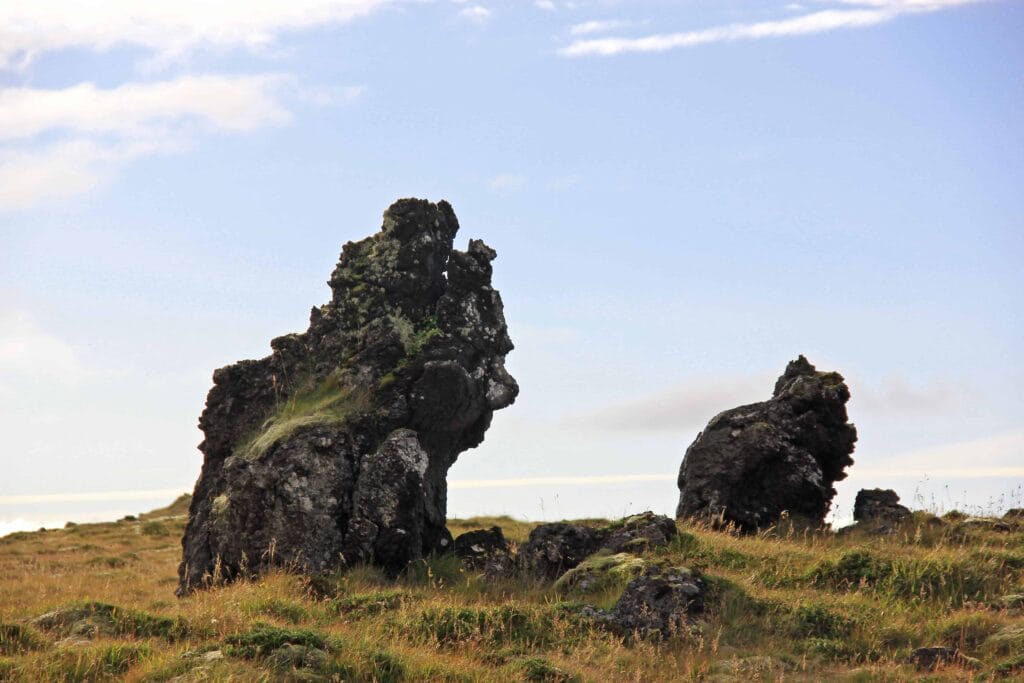
Trolls in Iceland
Icelandic trolls could be seen as the classic examples of the beings who will be a reflection of your behavior. A good deed for a troll will earn you a fortune, in literal terms, while a bad one may have some kind of a rage feat coming your way. Trolls are often described as huge human-like figures who are generally stupid and greedy with a few exceptions of kind and wise ones. Trolls occupy the most amount of space in Icelandic folklore and may even be accused of monopolizing the tales. Where elves are described and drawn as beautiful beings who emits a low light from them, trolls are often pictured as a lot less picturesque and appealing in physical terms. But they share the same temper as that of the elves and can cause serious damage to the ones who threaten them, their fellows, or their homes. Trolls are also capable of performing magic like elves and there are many folk tales where they are seen casting terrible spells or enchanting human beings.
Mountain areas, especially highlands, are the natural habitat of trolls. The food they are accustomed to eating is human flesh and is quite popular for hunting lost travelers, luring unsuspecting humans who are passing by their caves using spells, magic potions, or by force. This inhumane behavior of trolls is what gave rise to the saying that trolls will abduct misbehaving children and eat them. This kept them in check and also settled fear of trolls in the hearts of children.
Another interesting fact about trolls is that they can only travel in the night time. Come daylight, they have to go in hiding because if they are touched by the sunlight, they will turn into stones. There are several places in Iceland with unique stone structures and monoliths and almost all of them have a legend that has something to do with the trolls. Ther is Skessuhorn or Troll Women’s Peak in West Iceland, Tröllaskarð or Troll’s Pass in the North Iceland, Hvítserkur cliff in northwest Iceland which is said to be a petrified troll who got turned into stone while he was tearing down the and the three titanic rock of the South coast which are said to be three trolls who got petrified in the process of dragging a three-mast ship to the shore. Of course, the attempt went futile.
Needless to say, trolls have been a major part of the folklore of Iceland as well as the tourism industry. There are several tales that you will get to hear upon your arrival at different destinations so, do not forget to converse with the tourist because that is the ideal way to get into the depth of these fantastic stories.

Trolls vs Ogres
Since both trolls and ogres are described as larger than life, hideous-looking monsters, who are cruel and greedy, it is common for people to mistake them as one and not separate mythical figures. Both ogres and trolls feed on human flesh and have murderous instincts. Ogres are humanoids that are quite unappealing in terms of appearance and have a lot of hair on their bodies. The trolls are somewhat of the same stature as well.
The main difference between ogres and trolls is that ogres do not turn to stone when coming in contact with the sunlight while trolls do. Another prominent difference seems to be the fact that people believe trolls to be reasonable and if someone were to negotiate with them for letting the captives go or removing a spell or treating someone enchanted with a potion, then trolls are more inclined to listen to them. However, ogres are seen as the embodiment of evil and there is no way to reason with them at all. Another notable difference is that trolls originated from Scandinavian and Norse mythology while the ogres are believed to have originated either from the French language or Hungarian. Some people believe them to be biblical beings.

Ogre of Iceland - The Yule Lads
Iceland, being a fairly rich country in terms of folklore, have several mentions dedicated solely to ogres. Not only that, Icelandic ogres have the privilege to be the Santa Clause of the country in the stead of actual Santa accepted across the whole world. Yule Lads of Iceland are known as the Santa Clauses of Iceland. They are a total of 13 in numbers and are sons of the ogres Grýla and Leppalúði. The family also has a pet cat that devours young mischievous children known as Yule Cat.
The initial account of Yule Lads states them as mischievous pranksters who would steal from people, tease them, pram them, and each one flaunted a unique trait which is also responsible for their names. For example, the Yule Lad named “Dog Slammer” would run around and slam people’s doors and then run away again to trouble them all night. The “sausage-swiper” would steal the sausages and the “candle-stealer” would steal the candles.
Yule Lads, who used to be nothing but mischievous is now seen as a positive figure in the country. Icelandic Christmas is celebrated as Yules Lads performing as 13 Santa Clauses for the festival. Christmas celebrations start about 13 days before 24th, the Christmas day in Iceland. They leave gifts and treats to the children who have been good and rotten potatoes to the ones who have been naughty. Although, the cat and the mother have been the same and still like to steal and eat naughty kids. However, the Yule Cat has turned into a figure which is used as a Christmas decoration in the capital city.
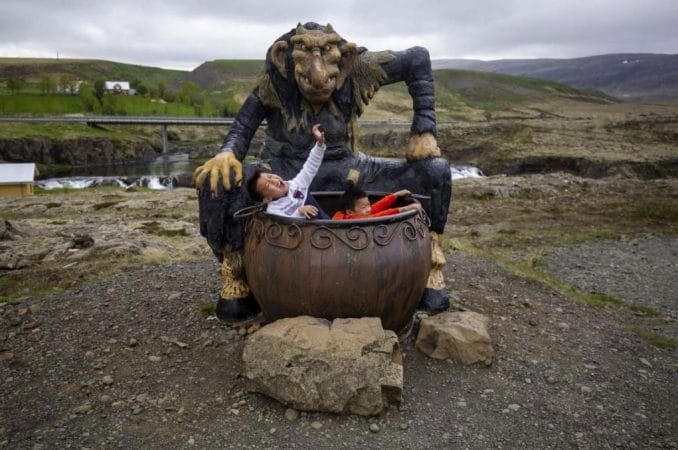
The Moral of the Story
The best thing about Iceland’s folktales and legends is that the deeper you dive into them, the more you see new things unfolding. From Grýla, troll stones, ghosts, dragons, human-sized or bigger lizards, and other reptiles, and Yule Lads to the mysterious guardian spirits of the land of ice and fire, these mythological stories and legends are never-ending and offer continuous entertainment to not only the tourist, who are hearing them for the first time but also the locals who rely on them.
Every legends and folk tale in Iceland have a certain purpose – to deliver a message or moral, much like fables, and these morals almost always have the spirit of nature involved one way or other. Whether it is about a troll who overstepped the boundaries and abducted a human or an elf who wreaked havoc on people who tried to harm their homes, there is always a moral in the story and most of the time it is about respecting the land that you live on. Other moral topics include generosity, kindness, justice, and protection of the land. There are several stories where you will find all the supernatural beings of the land of ice and fire joining hands to conserve the land and protect it from intruders. One such story is the battle story of Iceland with the deceitful king Harald Bluetooth. The dragon, the griffin, the bull, and the giant – the four guardian spirits of Iceland came together with lizards, snakes, birds, and many other animals to keep the king away from the island as he tried to invade it several times, trying from every possible angle that there way. At last, the king had to retreat when he saw that his efforts had no use at all hence showcasing the beautiful and much-respected world of the legends in Iceland.



